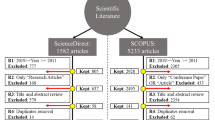Abstract
In recent years, the applications of industrial robots are expanding rapidly due to Industry 4.0 oriented evolutions, ranging from automobile industry to almost all manufacturing domains. As demands with rapid product iterations become increasingly fluctuant and customized, the assembly process of industrial robots faces new challenges including dynamic reorganization and reconfiguration, ubiquitous sensing, and communication with time constraints, etc. This paper studies the industrial robot assembly process modeling, planning, and scheduling based on real-time data acquisition and fusion under the framework of advanced shop-floor communication and computing technologies such as wireless sensor, actuator network, and edge computing. Taking the assembly of industrial robots as the specific object, the multi-agent model of industrial robot assemble process is established. Then, the encapsulation, communication, and interaction of agents with real-time data acquisition and fusion are studied. Based on multi-agent reinforcement learning approach, an intelligent planning and scheduling algorithm for industrial robot assembly is proposed, and a simulation case is presented to demonstrate the proposed model and algorithm.






Similar content being viewed by others
References
(2017) IFR forecast: 1.7 million new robots to transform the world’s factories by 2020 - International Federation of Robotics. https://ifr.org/ifr-press-releases/news/ifr-forecast-1.7-million-new-robots-to-transform-the-worlds-factories-by-20. Accessed 11 March 2018.
Monostori L, Kádár B, Bauernhansl T, Kondoh S, Kumara S, Reinhart G, Sauer O, Schuh G, Sihn W, Ueda K (2016) Cyber-physical systems in manufacturing. CIRP Ann Manuf Technol 65:621–641. https://doi.org/10.1016/j.cirp.2016.06.005
Monostori L (2014) Cyber-physical production systems: roots, expectations and R&D challenges. Procedia CIRP 17:9–13. https://doi.org/10.1016/j.procir.2014.03.115
Bagheri B, Yang S, Kao H, Lee J (2015) Cyber-physical systems architecture for self-aware Machines in Industry 4.0 environment. IFAC-PapersOnLine 48:1622–1627. https://doi.org/10.1016/j.ifacol.2015.06.318
Michniewicz J, Reinhart G (2016) Cyber-physical-robotics – modelling of modular robot cells for automated planning and execution of assembly tasks. Mechatronics 34:170–180. https://doi.org/10.1016/j.mechatronics.2015.04.012
Seiger R, Keller C, Niebling F, Schlegel T (2015) Modelling complex and flexible processes for smart cyber-physical environments. J Comput Sci 10:137–148. https://doi.org/10.1016/j.jocs.2014.07.001
He N, Zhang DZ, Li Q (2014) Agent-based hierarchical production planning and scheduling in make-to-order manufacturing system. Int J Prod Econ 149:117–130. https://doi.org/10.1016/j.ijpe.2013.08.022
Kucukkoc I, Zhang DZ (2016) Mixed-model parallel two-sided assembly line balancing problem: a flexible agent-based ant colony optimization approach. Comput Ind Eng 97:58–72. https://doi.org/10.1016/j.cie.2016.04.001
Park S, Kim J, Fox G (2014) Effective real-time scheduling algorithm for cyber physical systems society. Futur Gener Comput Syst 32:253–259. https://doi.org/10.1016/j.future.2013.10.003
Babiceanu RF, Seker R (2016) Big data and virtualization for manufacturing cyber-physical systems: a survey of the current status and future outlook. Comput Ind 81:128–137. https://doi.org/10.1016/j.compind.2016.02.004
Lee J, Bagheri B, Kao H (2015) A cyber-physical systems architecture for industry 4.0-based manufacturing systems. Manuf Lett 3:18–23. https://doi.org/10.1016/j.mfglet.2014.12.001
Wittenberg C (2016) Human-CPS interaction - requirements and human-machine interaction methods for the industry 4.0. IFAC-PapersOnLine 49:420–425. https://doi.org/10.1016/j.ifacol.2016.10.602
Pirvu B, Zamfirescu C, Gorecky D (2016) Engineering insights from an anthropocentric cyber-physical system: a case study for an assembly station. Mechatronics 34:147–159. https://doi.org/10.1016/j.mechatronics.2015.08.010
Dworschak B, Zaiser H (2014) Competences for cyber-physical Systems in Manufacturing – first findings and scenarios. Procedia CIRP 25:345–350. https://doi.org/10.1016/j.procir.2014.10.048
Shen W, Hao Q, Yoon HJ, Norrie DH (2006) Applications of agent-based systems in intelligent manufacturing: an updated review. Adv Eng Inform 20:415–431. https://doi.org/10.1016/j.aei.2006.05.004
Manupati VK, Putnik GD, Tiwari MK, Ávila P, Cruz-Cunha MM (2016) Integration of process planning and scheduling using mobile-agent based approach in a networked manufacturing environment. Comput Ind Eng 94:63–73. https://doi.org/10.1016/j.cie.2016.01.017
Barenji AV, Barenji RV, Hashemipour M (2016) Flexible testing platform for employment of RFID-enabled multi-agent system on flexible assembly line. Adv Eng Softw 91:1–11. https://doi.org/10.1016/j.advengsoft.2015.08.010
Cupek R, Ziebinski A, Huczala L, Erdogan H (2016) Agent-based manufacturing execution systems for short-series production scheduling. Comput Ind 82:245–258. https://doi.org/10.1016/j.compind.2016.07.009
Leitao P, Karnouskos S, Ribeiro L, Lee J, Strasser T, Colombo AW (2016) Smart agents in industrial cyber–physical systems. Proc IEEE 104:1086–1101. https://doi.org/10.1109/JPROC.2016.2521931
Giordani S, Lujak M, Martinelli F (2013) A distributed multi-agent production planning and scheduling framework for mobile robots. Comput Ind Eng 64:19–30. https://doi.org/10.1016/j.cie.2012.09.004
Nouri HE, Belkahla Driss O, Ghédira K (2016) Simultaneous scheduling of machines and transport robots in flexible job shop environment using hybrid metaheuristics based on clustered holonic multiagent model. Comput Ind Eng 102:488–501. https://doi.org/10.1016/j.cie.2016.02.024
Wang S, Wan J, Zhang D, Li D, Zhang C (2016) Towards smart factory for industry 4.0: a self-organized multi-agent system with big data based feedback and coordination. Comput Netw 101:158–168. https://doi.org/10.1016/j.comnet.2015.12.017
Pande V, Marlecha C, Kayte S (2016) A review- fog computing and its role in the internet of things. Int J Eng Res Appl 6:7–11
Lu F (2012) The ZigBee based wireless sensor and actor network in intelligent space oriented to home service robot. Int J Commun Netw Syst Sci 05:280–285. https://doi.org/10.4236/ijcns.2012.55037
Satyanarayanan M (2017) The Emergence of Edge Computing, vol 50, pp 30–39. https://doi.org/10.1109/MC.2017.9
Shi W, Cao J, Zhang Q, Li Y, Xu L (2016) Edge computing: vision and challenges. IEEE Internet Things J 3:637–646. https://doi.org/10.1109/JIOT.2016.2579198
Bumgardner VK (2017) Contributions to edge computing. Dissertation University of Kentucky
Brucker P, Knust JS.(2006) Complex Scheduling
Gabel T (2009) Multi-agent reinforcement learning approaches for distributed job-shop scheduling problems. Dissertation Universität Osnabrück
Jiménez YM (2011) A generic multi-agent reinforcement learning approach for scheduling problems. Dissertation Vrije Universiteit Brussel
Gomes ER, Kowalczyk R (2009) Dynamic analysis of multiagent Q -learning with ε-greedy exploration: International Conference on Machine Learning
Author information
Authors and Affiliations
Corresponding author
Additional information
Publisher’s note
Springer Nature remains neutral with regard to jurisdictional claims in published maps and institutional affiliations.
Rights and permissions
About this article
Cite this article
Tan, Q., Tong, Y., Wu, S. et al. Modeling, planning, and scheduling of shop-floor assembly process with dynamic cyber-physical interactions: a case study for CPS-based smart industrial robot production. Int J Adv Manuf Technol 105, 3979–3989 (2019). https://doi.org/10.1007/s00170-019-03940-7
Received:
Revised:
Accepted:
Published:
Issue Date:
DOI: https://doi.org/10.1007/s00170-019-03940-7




